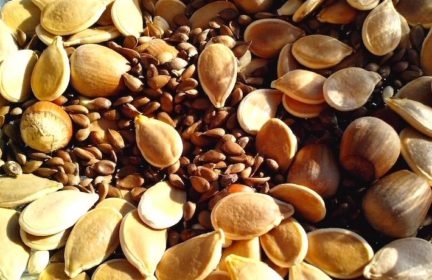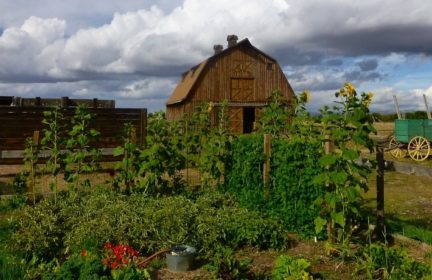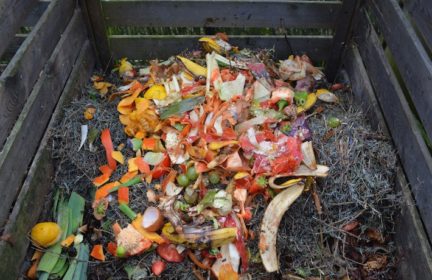Building raised garden beds
(Another short guide, for those getting started in gardening)
When people talk about ‘raised beds,’ they usually mean soil that has been raised about 6” above the surrounding ground by a frame of wood, stone, or cement blocks. If you have read the forum about getting started in gardening, you will know that you don’t actually need a frame to make a raised bed. However, having a frame makes it easier to maintain your bed (the sides don’t erode), helps keep your mulch in place (especially if you are topping your beds with dried leaves in the winter), and can let you make a higher bed. There are also plenty of aesthetic benefits. You can paint your beds to match your house, use stonework to add visual interest to your yard, or just keep things looking neat. If you have the time and energy, it can be worth doing.
Here is some guidance to get you started. These are based on my own experiences and reading. I’ve framed beds with untreated lumber, scrap cedar, and stone, and I’ve used logs and cement block in other landscaping projects. I claim no professional expertise. Your experiences may vary.
Before we start, I want to make one thing clear. Sometimes people see raised beds (i.e., beds with frames) and assume that you build the frame and then fill it with soil. You can do that – it is actually at the heart of the Square Foot Gardening method – but it’s expensive and usually unnecessary. What you want to do is prepare an unframed raised bed by fluffing up the soil with a good double-dig and maybe adding some compost, and then put the frame around your bed.
With that in mind, the key steps to building a raised bed are:
1) Dig the bed
2) Choose your materials (wood or stone/cement block)
3) Obtain your materials
4) If using wood: prebuild your frames
5) Install your frame
Skill level needed is minimal and it decreases if you don’t care about the aesthetics.
1) Dig your Bed. See the instructions in the Getting Started with Gardening forum or borrow a copy of How to Grow More Vegetables from your local library. Double dig your bed.
2) Choose your Materials
Your two main options are wood or some form of stone or cement block. I’ll discuss each in turn.
Wood:
The main benefits of wood are that it is cheap, easy to work with, and can be painted (if you choose). The main drawback is that most wood rots when in contact with the ground. You have three main options (as I see it) to deal with this:
a) Use regular, untreated wood to build your beds. If you use 2×10 pine from your local big box store, your bed will probably last several years before needing to be replaced. I have gotten 4+ years out of untreated wood.
b) Use cedar or another variety of wood that is naturally resistant to rot and bugs. You probably won’t be able to find large enough sections of wood at a big box store (at least I haven’t), but if you go to a local lumber yard and explain to someone what you are doing, they can probably point you to locally available, rot-resistant varieties. The drawback is that it is expensive. As an aside, I live in an area where many houses have cedar siding, and I have obtained scrap siding from siding repair jobs. It works okay for garden beds. It is a little weak and needs more support and it still breaks down over time. But it works and it’s free.
c) Use treated lumber. Pressure treated wood is impregnated with chemicals to prevent rot. The current varieties made in the US are no longer treated with arsenic (technically chromated copper arsenate) and at least one manufacturer claims that their product is safe for vegetable gardens. Nonetheless, I personally choose to avoid it for growing food.
All of the above assumes that wood = cut lumber. You can also use tree trunks (laid horizontally) if they are thick enough or logs (set vertically) if you have enough of them. In my area, a large log may last 3 years before rotting to uselessness.
Stone or cement block:
If you have free access to large stones (at least the size of Tom Clancy novel or kids’ soccer ball), they make a great border. They are easy to install (even easier than wood, albeit heavier), look cool, and even retain heat to help your plants grow. I would advise against using smaller stones, especially if you need to stack them to get the height you need. They will fall over, look messy, and not do the job. (For the same reason, I wouldn’t use regular sized, un-mortared bricks.) In general, the bigger the stones you use the better (within reason of course). Just be careful moving them.
Cement blocks are essentially like big, regular stones. I haven’t tried them for garden beds, but I have used them for retaining walls and they are easy enough to work with. For a 4×8 garden frame, I wouldn’t recommend you go through all the steps you need for a proper retaining wall, but I would dig a trench 1” or 2” below the soil level, level the trench, and tamp the bottom. This will help things look neater and make your blocks less likely to move. More on that below. I would suggest 6” high blocks, although you could try 2 courses of 4” high blocks. You may have some problems with the 4” blocks moving, but probably not as much as you would with small rocks if you get blocks that are fairly wide (front to back). Many are made with some sort of interlocking shape (usually a lip at the back) or a pin system, which should help even more.
A final note:
I have recently seen a block-and-wood combo where you buy large cement corner posts that have slots molded into them to accept wooden boards (https://www.lowes.com/pd/Oldcastle-Planter-Wall-Tan-Retaining-Wall-Block-Common-6-in-x-8-in-Actual-5050-in-x-7-75-in/1001156396). I haven’t tried it yet, but I may do so when my current wooden beds rot out. It looks like a good option, especially if you can replace rotted boards without moving the corner posts. It would really reduce the labor cost of using untreated wood. If you try it, maybe post below on the experience.
3) Obtain your materials.
Free is best, but you also want materials to be clean so that nothing toxic enters your garden. You may be able to source scrap wood from building projects in your neighborhood or get tree trunks or stone from your own land or friends’ yards. Cement block can be purchased (including ordered for delivery) from landscape centers and big box stores.
If you are buying lumber, I would suggest buying 2×10 (which is actually 1.5”x9.5”). The edges may be a bit higher than your soil, but the extra lip will help keep your mulch in place. For each bed, I would buy three 8-foot lengths and then have the store cut one of them in half. They’ll usually do it for free. Depending on how you assemble your bed, it will be either 3” shorter or 3” narrower than 4×8 feet, but it doesn’t matter. Just make sure you do all of your beds the same way. Buy some cheap 2×4 (e.g., stud lumber) to reinforce the corners. You can ask the store to cut it into 9” lengths (four 9”pieces for each bed), but they may charge you a few dollars because it’s more cuts. If you have the tools, you can do it at home. You’ll also want a box of 2.5” construction screws.
4) For wood only: Prebuild your frames.
Build a 4×8 wooden rectangle, reinforcing the corners. I could write detailed instructions on how to do this, but if you have basic woodworking skills you don’t need me to and if you don’t have basic woodworking skills, you probably need pictures (which I don’t have, since my beds are already done).
That being said, if you want to learn basic carpentry, this is a great project to start with. If you have the wood pre-cut at the store, all you need is a tape measure, a pencil, a drill, a small bit for piloting holes, and a driver bit for putting in screws. (A square for marking things and a clamp to hold the reinforcing blocks would help too, but aren’t totally necessary.) The driver bit may even come free with your box of construction screws. The process is straightforward, and you’ll feel pride every time you see your beds.
Build your beds out on your driveway or in your garage. It will be much easier to get the corners flush and square. A 4×8 frame made from 2×10 pine will be a bit heavy, but should be easily moveable with the help of a friend. Especially if the corners are reinforced, you can carry it without it breaking.
Maybe someone building their own beds can post a step-by-step photo guide below to the carpentry. Yes, I checked Instructables for a good link, but most of what was there had either bad dimensions, was too deep (you’d need to fill with soil), or was actually an elevated bed (picture a garden bed built on top of a table; these can be good for gardeners with mobility challenges).
5) Install your beds
For wood (i.e., frame you’ve pre-built):
a) Use a hard rake to pull the soil in from the edges of your raised bed.
b) Use a shovel to scrape the ground flat all the way around the bed. If your yard is not level, I recommend digging downward on the uphill side(s) so that your bed will lay flat.
c) Position your frame
d) Check that the frame is level front to back and side to side by putting a bubble level on the boards. (If you don’t have a bubble level, you can buy a cheap 9” torpedo level for less than $10.) If it’s not level, move the frame and dig downward on the high side(s) or prop up the low sides with rocks. If you prop up the low sides, make sure that the bottom of the board is still at or below the level of the surrounding soil. You’ll also need to back fill and tamp down the dirt in that area to that the frame doesn’t shift and settle later.
e) Backfill as necessary against the outside of the frame (i.e., if you cut a wider trench in the soil, fill it in around the frame) and rake the interior level. You’re done!
If you are using tree trunks, I would just dig a trench deep enough that when you lay the trunk in, there are no large gaps where dirt from the garden bed can leak out underneath. If you are using logs, lay like stone or block, below.
For stone and block:
a) Use a hard rake to pull the soil in from the edges of your raised bed.
b) Use a shovel to dig a narrow, straight trench, as wide as your stone/block, 1-3” deep. 1” is probably enough, but if you have wide, flat stones you may want to ‘plant’ them vertically, in which case a deeper trench will make them more stable.
c) Whether you level your trench is up to you. I don’t think it matters much with natural stone, but you may feel that block looks better when it is properly level. To level your trench, lay a piece of straight lumber (any straight, long piece of 2×4 will do) and put a bubble level on it. Dig or fill as necessary. For a level block wall, make sure to tamp down the bottom of the trench after digging.
d) Lay your stone or block.
· For laying stone, it will become a bit of a jigsaw puzzle as you try to get the pieces to interlock. To make things easier, lay all of your stones out near you in the yard, so that you can easily test fit pieces until you find the right one.
· If you are laying block, you may wish to stretch a string between two stakes on each side to show where the front of your blocks should line up. Most blocks come with angled sides. To avoid needing to cut any blocks, I would dig out a little bit of your bed at the corners, and use the angled sides of the block to angle the wall around. It should only take one angled block to turn the corner, so you shouldn’t lose much bed space.
e) Backfill. If you are laying stones, backfill with dirt on the outside and inside with a hand trowel as you go. Tamp the dirt down with the handle of your trowel or a fist sized stone to prevent the rocks from shifting. If you are laying block, I would lay everything first and then use a string or piece of scrap wood to make sure that all of the stones are in a straight line (if you haven’t done so already) and at an even depth. Adjust as necessary. Backfill the outside and the rake the interior level. You’re done!
-
Best Replies
-
Comments (13)
-



